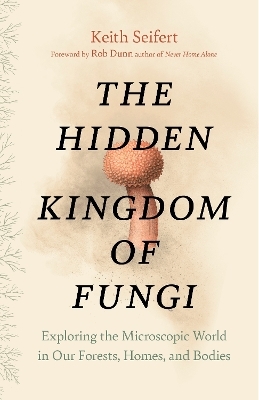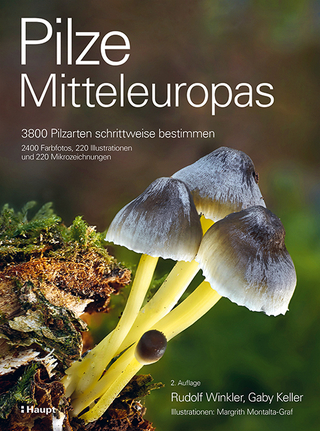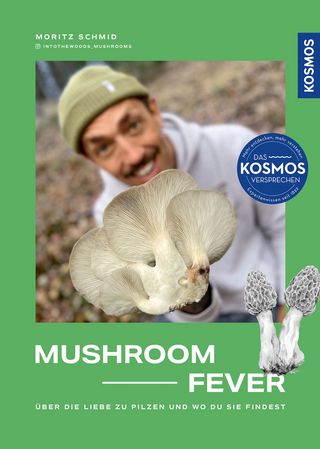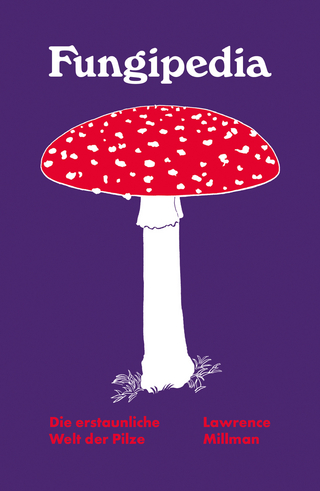
Hidden Kingdom
Greystone Books,Canada (Verlag)
978-1-77164-662-8 (ISBN)
Even though we can’t always see them, fungi exist all around us. From forests and farms to food and medicine—and even our homes and bodies—fungal connections shape how we live.
In this illuminating book, readers will “discover how these marvels of nature enrich (and sometimes threaten) our lives.”(Peter Wohlleben, New York Times-bestselling author of The Hidden Life of Trees.
Esteemed career mycologist Keith Seifert reveals the important role that microscopic fungi, including yeasts, molds, and slimes, play in our lives, all while remaining invisible to the naked eye. Divided into sections, each one exploring a different environment where fungi thrive, The Hidden Kingdom of Fungi introduces readers to the fascinating world of mycology, with information on:
How fungi are at the heart of life-changing medical breakthroughs, including the development of antibiotics such as penicillin and organ transplant drugs.
Where fungi live in our homes and how they influence our health, from our gut to our scalps.
How fungi add important vitamins to our diet and make our favorite foods and drinks possible, including wine, cheese, chocolate, and beer.
The essential role fungi are playing in innovative technologies, such as creating alternative energy sources, reducing plastic pollution, cleaning up toxins from oil spills, and even building architecture for a Mars colony.
Despite their many benefits, we hold a precarious relationship with fungi: fungal diseases lead to over 1 million deaths each year, and they have played a destructive role in disasters ranging from the Irish Potato Famine to possibly even the extinction of the dinosaurs. The Hidden Kingdom of Fungi urges us to better understand our relationship with fungi—and to plan our future with them in mind—while revealing their world in all its beautiful complexity.
Keith Seifert spent more than 40 years studying fungi on five continents. At Agriculture and Agri-Food Canada, he did research on microscopic fungi from farms, forests, food, and the built environment, to reduce toxins and diseases affecting plants and animals. He was president of the International Mycological Association, an executive editor of Mycologia, and associate editor of several other scientific journals. He lives near Ottawa, Canada. Dr. Rob Dunn is Professor of Applied Ecology at North Carolina State University and the author of seven books, including Delicious, Never Home Alone, and A Natural History of the Future. He’s written for Scientific American, Smithsonian Magazine, and National Geographic and regularly advocates for citizen science. He lives in Raleigh, North Carolina.
Foreword
A Note About Names
Introduction: Diversity in the Dust
PART 1: The Hidden Kingdom
1 | Life in the Colonies: Fungal Evolution
2 | Life on the Commons: From Mutualism to Parasitism to Biological Invasion
PART 2: The Fungal Planet
3 | Forests: Seeing the Fungi for the Trees
4 | Farming: The Seventh-Oldest Profession
5 | Fermentation: Food, Drink, and Compost
6 | The Secret House: Fungi and the Built Environment
7 | Holobiont: The Mycobiome and the Human Body
PART 3: The Mycelial Revolution
8 | Mycotechnology: Fungi for the People
9 | Thirty Thousand Feet: Fungi and the Sustainable Planet
Acknowledgments
Appendix: Fungal Classification
Notes
Literature Cited
Index
| Erscheinungsdatum | 28.07.2021 |
|---|---|
| Vorwort | Rob Dunn |
| Zusatzinfo | B&W drawings throughout |
| Sprache | englisch |
| Maße | 139 x 215 mm |
| Themenwelt | Naturwissenschaften ► Biologie ► Mykologie |
| ISBN-10 | 1-77164-662-4 / 1771646624 |
| ISBN-13 | 978-1-77164-662-8 / 9781771646628 |
| Zustand | Neuware |
| Haben Sie eine Frage zum Produkt? |
aus dem Bereich


